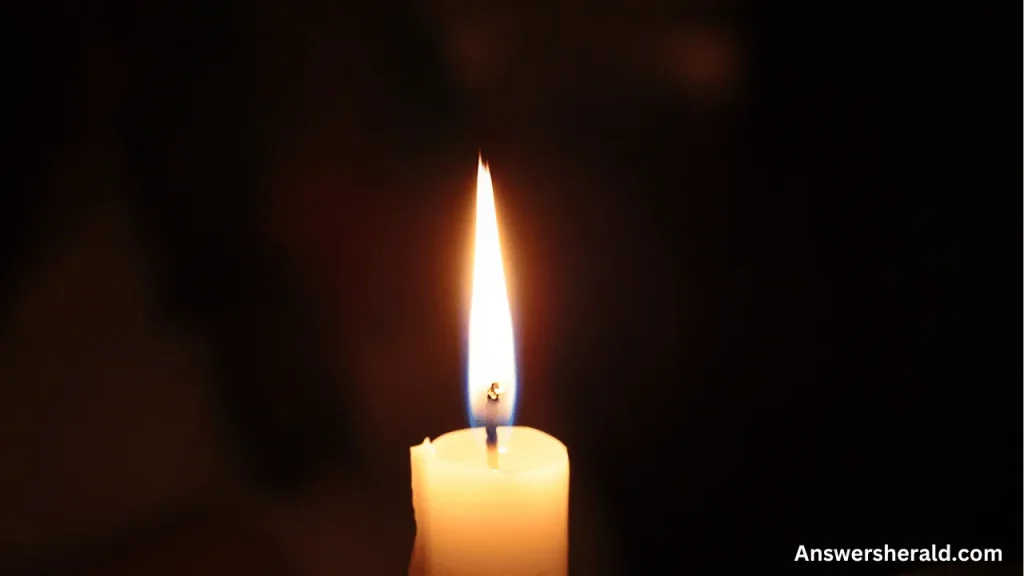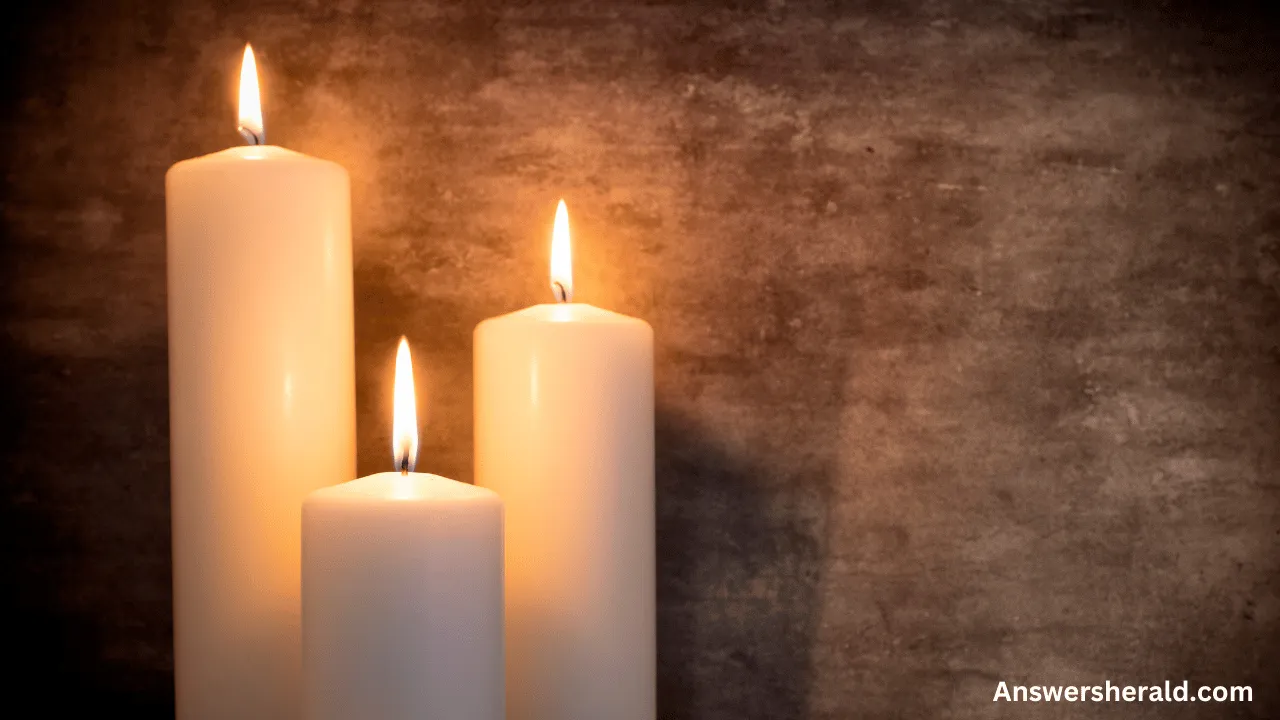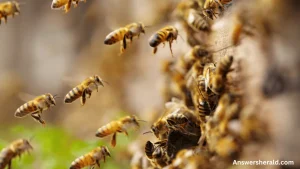Candles have been essential to human culture and spirituality for thousands of years. They are used in ceremonies, for illumination, and as symbols of light and warmth. Beyond their practical uses, candles hold a more profound, more mystical significance for many.
The way a candle burns, including the movement of its flame, can be interpreted in various ways, often reflecting the energy of the surroundings or the intent behind the candle’s use.
But what does it mean when a candle flame moves significantly? Is it merely a physical reaction to the environment, or is there more to it?
This exploration seeks to understand the nuances behind the movement of a candle flame. By delving into both scientific and mystical perspectives, we aim to provide a comprehensive view that respects the rational and spiritual interpretations of this phenomenon.
Contents
The Science of Candle Flames
The science of candle flames is a fascinating area of study that intertwines principles of chemistry, physics, and fluid dynamics to explain how and why candles burn in the way they do.
Understanding the science behind candle flames can give us insights into the principles of combustion, the role of different elements in the burning process, and how environmental conditions can alter the characteristics of a flame.
This knowledge enriches our appreciation of a familiar yet complex phenomenon and has practical implications for improving candle design and safety.
Also read: Full Moon Sleeplessness: A Spiritual Perspective
The Basics of Candle Combustion
Understanding the basics of candle combustion is essential to grasping why a candle flame moves. A candle flame burns due to the heat that melts the wax near the wick.
This liquid wax is then drawn up the wick by capillary action. When it comes into contact with the flame, it vaporizes and combusts, which keeps it burning.
The movement of a candle flame can be influenced by various factors, including airflow, the candle’s composition, and the surrounding environment.
The Impact of Airflow
Airflow is perhaps the most significant factor affecting a candle flame’s movement. Even a slight breeze can cause a flame to flicker and dance.
This is because the flow of air changes the rate at which the candle consumes fuel (wax), affecting the flame’s stability. Drafts, fans, or even the movement of people nearby can create enough airflow to cause noticeable changes in how a candle flame behaves.
Candle Composition and Environment
The material of the candle and its immediate environment also affect how the flame moves. Different waxes burn at different rates, which can affect flame stability.
For example, a candle made from hard wax may have a steadier flame than one made from softer wax. Similarly, the size and material of the wick can influence how the wax is drawn up and vaporized, impacting the flame’s movement.
Environmental factors like temperature, humidity, and air pressure can also affect the candle’s burning process, contributing to the variability of flame behavior.
Also read: Spiritual Meaning of a Blue Rose Explained

The Mystical Interpretation of Moving Candle Flames
Moving beyond the physical explanations, many cultures and spiritual traditions view the behavior of a candle flame as significant, often interpreting its movements as messages or signs.
Communicating with the Divine
In many spiritual practices, candles are used as a medium for communication with the divine or the spiritual realm. A steady flame is generally seen as a sign of positive energy and a successful connection to the spiritual world.
In contrast, a flickering or dancing flame can indicate the presence of spirits or energies. The direction and pattern of the flame’s movement are often interpreted to discern messages or guidance.
The Energy of Intentions and Surroundings
The movement of a candle flame is also believed to reflect the energy of the intentions set during its lighting or the energy of the environment.
A calm flame suggests peace and harmony, while a restless flame might signal resistance or energetic disturbances.
Some practitioners use candle flames to assess the energy of a room or to aid in meditation and reflection, observing the flame’s behavior as they focus on their thoughts and intentions.
Reading Candle Flames in Rituals
In ritualistic settings, the way a candle burns, including the movement of its flame, can be interpreted to gain insights into the outcome of the ritual or the state of the practitioner’s spirit.
For instance, a flame that leans toward a particular direction might indicate an inclination toward or away from something in the practitioner’s life.
Sudden extinguishing could warn of caution, while a crackling flame might suggest communication from the spiritual realm.
Conclusion
The question of why a candle flame moves so much can be answered through scientific and mystical lenses. Scientifically, the movement results from physical factors such as airflow, candle composition, and environmental conditions.
Mystically, the movement of a candle flame holds more profound significance, offering insights into the spiritual world, the energy of intentions, and the nature of the surrounding environment.
Whether one leans towards the scientific explanation, the mystical interpretation, or a blend of both, it’s clear that observing a candle flame can offer a wealth of insights.
In a world where the tangible and the spiritual often intersect, the dancing flame of a candle reminds us of the complex layers of reality and the myriad ways in which we seek to understand and interact with them.
FAQs
1. What causes a candle flame to burn?
A candle flame burns due to combustion, a chemical reaction between the candle wax (fuel) and oxygen from the air. The heat from the lit wick vaporizes the wax, which reacts with oxygen to produce the flame, generating light, heat, carbon dioxide, and water vapor.
2. Why does a candle flame have different colors?
The different colors in a candle flame are due to variations in temperature and combustion efficiency across the flame. The blue base of the flame is the hottest part, where complete combustion occurs. The brighter, yellow part of the flame is more excellent and results from incomplete combustion, emitting soot particles that glow, producing yellow light. The very tip of the flame is the most incredible part, appearing faint blue or almost invisible.
3. How does airflow affect a candle flame?
Airflow significantly impacts a candle flame’s behavior. A steady, gentle airflow can help the flame burn more evenly and brightly by supplying fresh oxygen. However, solid drafts or sudden air movements can cause the flame to flicker, dance, or even extinguish by disturbing the stable combustion process or cooling the wax vapor too quickly.
4. Can the type of wax influence how a candle burns?
Yes, the type of wax affects a candle’s burning characteristics. Different waxes have varying melting points, combustion temperatures, and fuel efficiencies. For example, beeswax and soy wax burn cleaner and slower than paraffin wax, affecting both the burn time and the behavior of the flame.
5. Why do candle flames sometimes flicker or dance even without drafts?
Candle flames can flicker or dance due to minor fluctuations in the air around the candle or variations in fuel supply and combustion. Convection currents (warm air rising and excellent air falling) can create subtle airflow that affects the flame even in seemingly draft-free environments. Additionally, irregular wick or wax consistency variations can alter the fuel supply rate, causing the flame to flicker.








